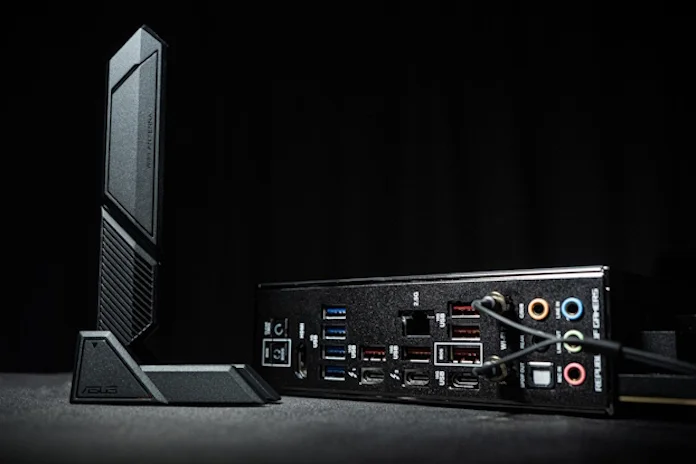For WiFi 7, the name of the game is speed. WiFi 7 kicks your wireless network into high gear with new tech that delivers faster wireless speeds than ever, all while retaining or refining the congestion-busting advantages of WiFi 6*. A variety of technologies work together to give WiFi 7 this more-than-welcome speed boost, but an important one is its support for ultra-wide 320 MHz channels**.
What are 320 MHz channels?
To explain what 320MHz channels are and what they have to offer for your network, let’s start by looking at the basic idea of channels. You can think of them like roads, and the data that passes through them like cars. Clearly, a four-lane highway can accommodate more traffic than a narrow two-lane country road.
If you want more cars to be able to pass through your roads over a given length of time, one thing you can do is make them wider by adding extra lanes. Just like roads, where the amount of traffic that can pass through is limited by the number of lanes, WiFi channels are limited by their width. Older WiFi standards could offer, at most, 80 MHz channels. In select regions, WiFi 6 doubled that figure with 160MHz channels – but due to limitations in the 5GHz band, only two 160MHz channels were available. Still, those channels gave users with compatible devices and routers a fast-moving highway for their data. WiFi 6E opened up access to the wide-open 6GHz band (once again, in select regions), allowing for many more 160 MHz channels than with WiFi 6.

But WiFi 7 lets you do more with the 6GHz band thanks to 320 MHz channels. Since the 6GHz band is more open, it can accommodate these wider channels. If 160 MHz channels are highways, 320 MHz channels are superhighways ready to offer a data rate that’s four times greater than what you could get with 80 MHz channels.
Simply put, 320MHz channels allow for much higher speeds than you could get with earlier WiFi standards. WiFi 7 seven can double the transmission capacity you have with WiFi 6 or 6E technologies. If you’ve been sitting on the sidelines with an older router that only offers 80Hz channels, you could be looking at a 4X increase in data transmissions rates just from 320 MHz channels alone – and WiFi 7 could boost your speeds even further with 4K QAM and Multi-Link Operation, depending on the router you select.
What can 320 MHz channels do for you?
For many of us, the experience we’re getting with older WiFi standards just isn’t enough. We’re adding more smart home devices, but we’re reaching the limits of how many devices can connect to our routers without interference. We’re upgrading our gaming and streaming setups, but we’re hoping that we won’t have to run yet another Ethernet cable to get the experience that we’re looking for. Others of us are upgrading to multigigabit internet connections, but we need routers that can take advantage of the increased speed and bandwidth.

We’re also looking to the horizon at new technologies that are headed our way. High-tech VR and AR worlds are creating exciting new possibilities for online conferences, exhibitions, and persistent online environments like the metaverse. Cloud gaming is creating new ways for us to join our friends in the latest games. And online streaming services are increasingly offering higher-fidelity 4K content for a richer, more immersive experience in your favorite shows and streams.
And that’s just what WiFi 7 can offer for your home. For healthcare facilities, corporate offices, government facilities, and many small businesses, the increased speed and bandwidth of WiFi 7 will pave over the roadblocks that are currently limiting the efficiency and capacity of their networks.

All these scenarios require fast, interference-free, high-bandwidth internet access – and that’s exactly what you get with WiFi 7 and its ultra-wide 320MHz channels. Even better, 320M MHz channels are just one of the many features debuting with WiFi 7. Click here to learn more about what’s new with WiFi 7.
*WiFi 7 features requires WiFi routers and client devices with WiFi 7-supported operating systems to support the corresponding features.
**The 320 MHz in the 6 GHz band may be unavailable in some regions / countries due to regulatory restrictions.

